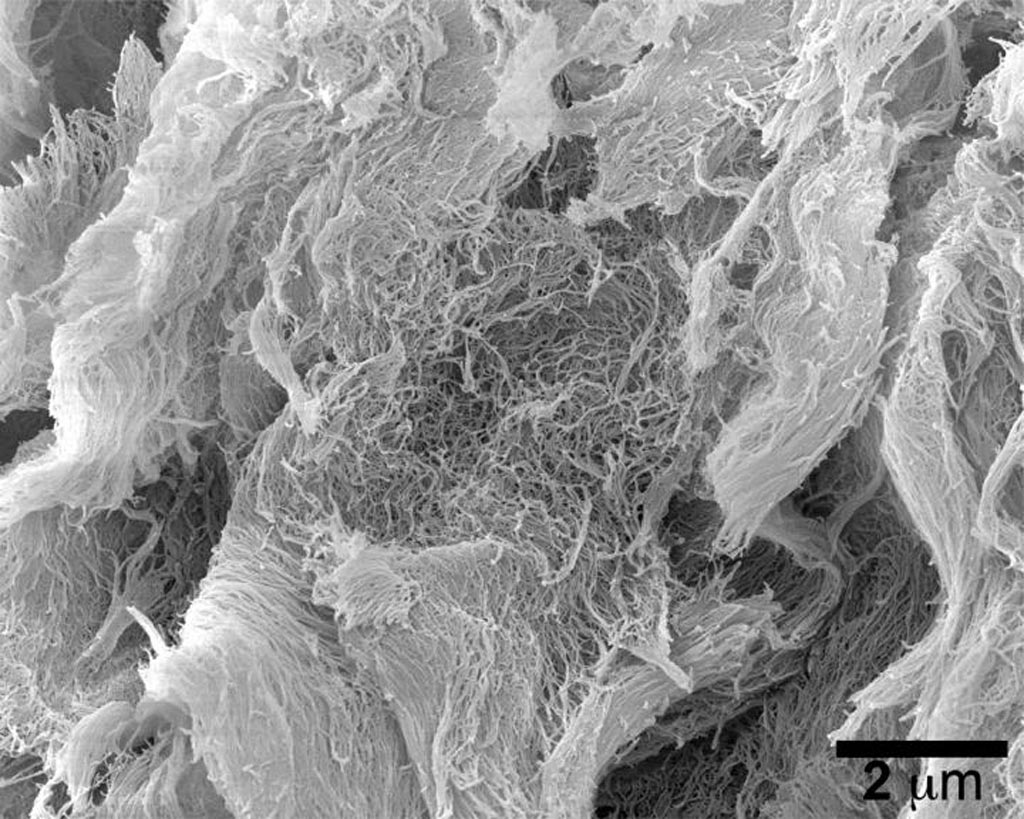Hydrogel Developed for Controlled Release of Immunotherapeutic Drugs
By LabMedica International staff writers
Posted on 21 Mar 2018
Cancer researchers have developed an injectable hydrogel designed to expedite the controlled release of a cyclic dinucleotide drug for enhanced cancer immunotherapy.Posted on 21 Mar 2018
Recent advancements in the field of immunotherapy have yielded encouraging results for the treatment of advanced cancers. Cyclic dinucleotides (CDNs) are a powerful new class of immunotherapy drugs known as STING (Stimulator of Interferon Genes) agonists, currently in clinical trials. However, previous studies of CDNs in mouse cancer models have demonstrated the necessity for multiple injections and improved survival only in relatively nonaggressive tumor models.

Image: A synthetic, injectable hydrogel developed at Rice University boosts the toxicity of a new class of cancer-fighting immunotherapy drugs. This scanning electron microscopy image shows the self-assembled nanofibers that make up the hydrogel (Photo courtesy of Hartgerink Research Group, Rice University).
Investigators at Rice University (Houston, TX, USA) sought to improve the efficacy of CDN immunotherapy by developing a novel biomaterial. This injectable peptide hydrogel was a positively charged, MultiDomain Peptide (MDP), which self-assembled to form a nanofibrous matrix and was easily delivered by syringe. They named the material “STINGel.” STINGel was designed to localize at the tumor to provide controlled release of CDN delivery, showing an eight-fold slower release rate compared to a standard collagen hydrogel.
The investigators tested STINGel in both laboratory cultures and in vivo. They reported in the February 6, 2018, online edition of the journal Biomaterials that for the in vivo portion, six groups of 10 rodents each were treated with CDN alone, control collagens alone, with CDN-MDP alone, or with STINGel (CDN plus MDP). Only one in 10 CDN or collagen plus CDN animals survived 105 days, but six of 10 animals treated with STINGel survived.
"The normal approach to CDN delivery is simple injection, but this leads to very rapid diffusion of the drug throughout the body and reduces its concentration at the site of the tumor to very low levels," said senior author Dr. Jeffrey Hartgerink, professor of chemistry and bioengineering at Rice University. "Using the same amount of CDN, the STINGel approach allows the concentration of CDN near the tumor to remain much higher for long periods of time. The CDN we used in this study is currently in clinical trials. We think that our STINGel approach has the potential to significantly broaden the scope of this powerful immunotherapy drug to a larger range of resistant cancers."
Related Links:
Rice University














